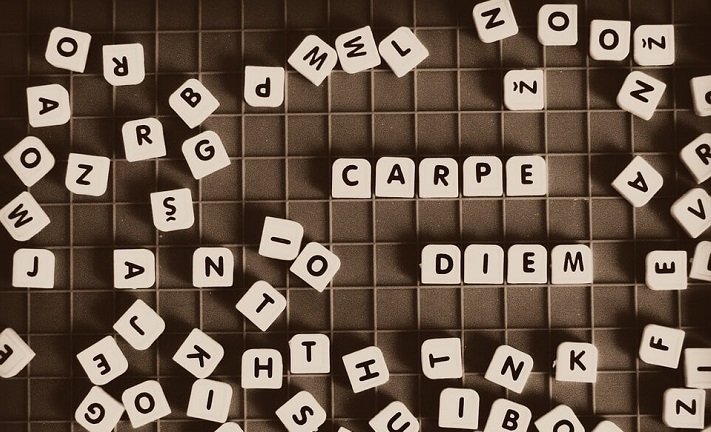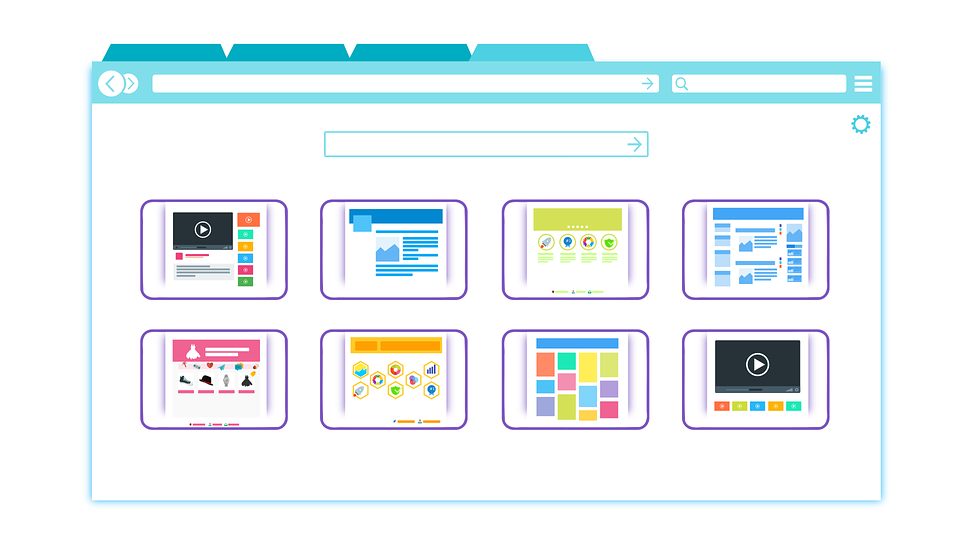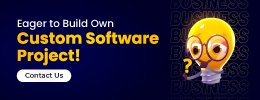Keys to Great Technical Communication

Technical communication/writing seems to be anything but subtle, nuanced, or sympathetic. Indeed, the artifacts produced through technical communication are usually straight-forward, concise, and direct. But there are a host of underlying soft skills that any person who aspires to be a great technical writer should possess. These are keys to great technical communication and many of them fall under the umbrella of Empathy.
We would be remiss if we didn’t also cover the aspects of technical writing that are indeed clear-cut. So we’ll also go over ten of the most important keys to technical communication that are more mechanical in nature.

Photo courtesy: Pixabay
Empathy is Always Foundational in Communication
We identified and prioritized more than fifty concepts related to creating great technical content. Half of the top twenty most popular concepts were either directly empathetic in nature or required strong sympathy as a major part of the process.
Here we’ll list those top ten empathetic-related concepts and why they are key to creating outstanding technical documentation.
Remember, many aspects of the technical communication process can benefit from the division of labor. Don’t worry if you are pursuing technical skills because your empathetic skills are lacking. Most of these empathetic elements can be performed or at least designed by someone else who does possess the necessary soft skills. But as you read through these concepts, you may be surprised at the ways in which you as a technical communications expert are actually practicing strong empathy.
 Photo courtesy: Pixabay
Photo courtesy: Pixabay
Identify with Your Audience
To identify with your audience it is important to know who they are. Knowing your audience deserves some dedicated deliberation. You may need to ask, survey, interview, or simply imagine yourself in the shoes of the reader. Only then can you address the concerns that your audience has. Not all technical writing projects require extensive details on the audience. A little goes a long way in ensuring your readers appreciate the way you put together your content.
Crave Feedback and Praise the Giver
Understand that your experience is your own. Everyone will bring their own unique perspective and these different points of view almost always make the end result much, much better. So welcome feedback. Usually, you’ll need to go out of your way to elicit it. When it does come, no matter its form or tone, be grateful for it and express that gratitude to the giver.
You want to be known as someone who knows how to accept feedback and praise the one who gave it. This will make it that much easier to get more feedback in the future. It’s hard for the reader to input their perspective on your technical writing if they think their insights will be underutilized or taken as a negative. Be positive when feedback comes.
 Photo courtesy: Pixabay
Photo courtesy: Pixabay
Build a Clear Technical Structure
Everyone struggles with that overarching topical structure. They understand they need to write about the industry, but they just can’t get a clear idea of the order or scope of their subtopics. It’s important to know that everyone’s writing structure is different. There is no hard and fast rule that can be universally applied.
One good idea is to try to break apart your content into three main categories. Two is okay, four is okay. Five is acceptable. Six and seven main categories are pushing it. But keep in mind, it’s all subject to the content itself. There are machine learning algorithms that can take your lowest level concepts and cluster them into semantic groupings automatically if you need to do this at scale. Then, break each category into three sections, again, without algorithm assistance if working with a small number of technical documents.
The lower you get in the hierarchy, the more permissible it is to go well beyond three items per level. The goal is to build a tree-like structure that is easy for readers to understand and recall.
This has a few benefits:
- It encourages you to group ideas more efficiently.
- It allows you to bring more of your ideas to the table. It’s easy to think of three basic concepts and expand from there.
- It provides a concise hierarchy that most technical communication tools can leverage.
Time is Against You - Stay Evergreen
Put yourself in your reader’s shoes. If they read your content three to five years from now, will it still be fresh and up to date? Does it need to be updated? If it does, show your audience your commitment to the subject and put forth the effort to make it fresh again. Oftentimes the larger context of your technical project will answer most of these questions.
With so many technologies, platforms, and cultural shifts, it can be difficult to keep up to date. Make sure you schedule on your calendar specific dates and times when you think the content will need to be reviewed. Build your evergreen efforts into your writing workflow and business processes.

Photo courtesy: Pixabay
How You Write vs What You Write
Our writing style is unique to our own personalities and strengths. For example, you may use short, concise, detail-oriented writing on complex topics that require the user to follow along. But cutting edge research publications may require that sentences be lengthy and exacting inaccurate. Know what is ideal for keeping your audience’s attention and preventing them from skipping over sections. If you are someone more focused on getting the business and product message across, you will likely be more verbose and might use a more free-flowing style that will grab a reader’s attention and keep them reading. This approach is great for technical marketing copy.
Technical vs Creative Communication: Creativity and inspiration are valuable resources that should be used in the right places at the right times. Creative writing is very different from technical writing. Creative writers need to consider many different elements such as theme, narrative, setting, etc. These aren’t as important in most technical documents.
Check Out: Top Blogging Platforms
 Photo courtesy: Pixabay
Photo courtesy: Pixabay
Plain, Simple Language is Best
If you need to deliver how-to technical content, simple language is best. Even when writing advanced technical papers, any non-standard phrases should be defined the first time they appear in the text. Alternatively, you can use a glossary with footnotes if you have a large number of terms that require detailed explanation. Technical writing often requires the writer to explain complex ideas in simple terms. If you’re not careful, this can come across as either bland or unnecessarily technical.
Use a readability tool to make sure your content meets the expected education level of your readers. Factors that affect readability include average sentence length, number of familiar words, abstract words, and long words.
Examples Speak Louder Than Words
An example is a great way to take your specific, technical instructions and place them into a context that the reader can understand. Use example data that aligns somewhat closely with the kind of data your reader will be using.
Don’t hesitate to pull information from other sources when appropriate. People are much more likely to pay attention to a readable, well-prepared example when good data sources are included. This is especially true if the reader is entering a new or unfamiliar domain as is the case with training documents.
First Person is a No-No in Tech Docs
Most creative writers learn to write in the first person because it is a very good technique in certain applications.
But for technical writing, using the first person can give a sense of bias whereas most technical communication should strive to be objective and unbiased in nature.
Though the first- or third-person tone could be used in examples for greater context.
Making a Technical, Human Connection
More often than not, technical writing doesn’t require establishing a strong rapport with the reader. However, throwing in a semi-casual sentence or even a half-sentence near the beginning of an article can help break the ice. This can be an effective way to subtly signal to the reader that the article was written by humans, for humans, and that they’ll be able to handle the content.
First impressions are important, and using a short, friendly, welcoming intro can go a long way. In general, it is best to avoid casual content throughout the body of the article, however. The closing is one more place where a friendly remark may be warranted.
Why It Matters to the Reader - State Outcomes
Our goal in writing for readers is to help them solve their problem, understand an issue, or follow a certain set of rules. In instructional writing, you’ll be directly telling them what to do. Other times, for more nuanced subjects, you may be leading them in a broader direction as you help them find a solution.
In short, write for the person on the other end of the computer. Help them achieve their goals and consider being explicit about what they can expect at the end of the document. “When you are done reading this article, you will be able to…”
Learn: 10 Finest Techniques to Build Customer Relationships
 Photo courtesy: Pexels
Photo courtesy: Pexels
Direct Technical Concepts
Empathy is great, but it shouldn’t diminish the importance of raw, technical skills. Here we go into some detail on major technical concepts.
An Illustration is Worth a Thousand Words
Including images in your content is important. Images help you convey complex details efficiently, especially in technical communication.
Visual explanation and examples that show the detail of the problem, or specific pieces of hardware, are a great way to assist readers in finding answers.

Photo courtesy: Pixabay
Plan, Plan, Plan Ahead
The technical content writing process is not easy, and there is no one-size-fits-all approach. You should expect that it will take you time to get the right formula to create a high-quality article.
The key is to plan ahead so that you have the resources on hand to create the content you need for your technical documentation. You want your technical writing to be accurate and effective for your audience. But you also want it to be concise, easy to read, and informative.
Photo courtesy: Pixabay
Know Your Stuff
One of the biggest reasons that writing this kind of content is difficult is that most people do not know the background details. These details are required to present such technical content in a way that is clear, accessible, and comprehensible to someone who doesn’t have a background in the technical areas being covered.
This means that if you want to become a master of writing technical content, you must know your stuff.
Though there are some technical documents that can actually leverage the author’s own ignorance of the subject matter. This is especially true for how-to articles targeted towards consumers or other novice readers. There is no better way to put yourself in the shoes of your reader than to actually be your own target audience. You will of course need to go through the experience and document it along the way. In this case, you’ll need access to subject matter experts who can provide answers to the questions you’ll almost certainly have. But the end result is often outstanding help content.
Read Your Own Work and Revise
The good news is that you can become a master of this content writing process. To get there, you must apply the steps above and read your own work. You will soon find that you can write a technical piece on your own with only a minor amount of editing.
You can also, after reading your own writing, take a look at the feedback you’ve received. Review the comments for areas where you need to be clearer, make corrections where needed, and generally improve your content.

Photo courtesy: Pexels
Give Credit Where Credit is Due
One of the things that you’ll have to do as a technical writer is to take responsibility for the content you write and acknowledge others who have assisted you. You should want your audience to be as knowledgeable about the topics as you are.
The best way to do this is to include references to your sources. Include references not only for data and hard facts but also for inspiration and direction.
Make it Pretty with Your Layout
There are various ways to do this. First of all, it’s important to consider the context of the audience. Are you writing content for a newsletter, informational website, blog, or product specification? The language, structure, and formatting should be adapted to the purpose of your content.
If you’re writing technical content, you should have all the needed tools (e.g., spell check, formatting help, link tool, text-to-speech). As a best practice, you should always include such functions in your technical documentation.
Also, consider the design of your own website. What is the style of your layout? Is it clean, modern, clean, and easy to read?
Photo courtesy: Pixabay
Scope Creep is Creepy
Define, document, and control the scope of the communication you are creating. Think it through. Don’t waste time writing a long-winded piece just to fill up space. Stick to the subject matter at hand.
Study the Art of Words
Get advice from professionals in your field. Stay up to date with emerging trends in the technical writing space. Find thought leaders and learn from their good examples. It’s also important to read books and articles in the technical writing field. Keep reading. Study the best writers in your field. Writing succinctly and effectively is a learned skill.

Photo courtesy: Pixabay
Wage War on Ambiguity
As a technical writer, one of your biggest goals is to eliminate ambiguity. Make sure your communication can be interpreted easily. Sometimes you may not have a clear way to know whether a reader knows the difference between a function and a method. You should find ways to remove ambiguity and ensure clarity.
To do this, you need to know the difference between something and the thing that something does. For example: What is a function? It’s what your software does. What is a method? It’s what the software instructs your computer to do. And so on.
Check Out: How Advanced Chatbot Improving Customer Experience In Online Business
Writing Tools - Use the Best
If you only take one thing away from this article, take away this: Spend some time every week evaluating technical documentation tools on the market. Millions of dollars are being poured into amazing software to make the lives of every technical professional easier. You won’t get to leverage all that hard work if you don’t know what is out there!
Any professional craftsman should always be using the very best tools at their disposal. Consider giving at least one new technical writing or productivity tool/platform a good 30-60 minute trial run every week. You may never know what you’ll uncover, especially with the rise of efficient, accurate neural networks and other machine learning platforms.
Would you like to read: 10 Types of Blogs That Make Money (Most Profitable Niches)













